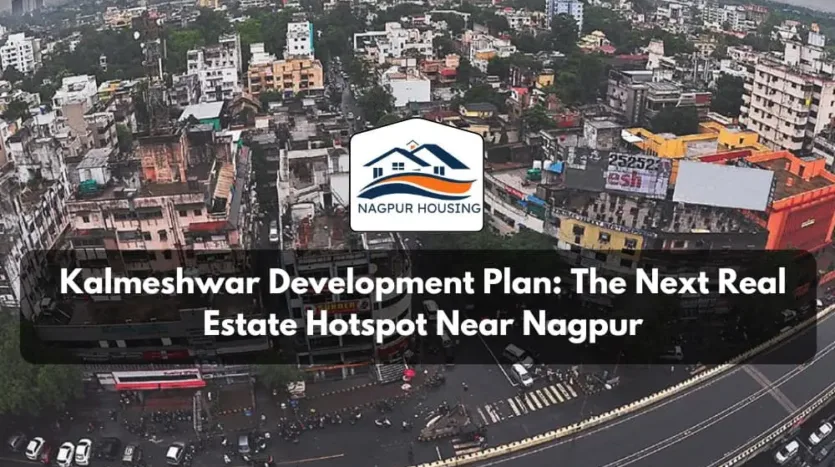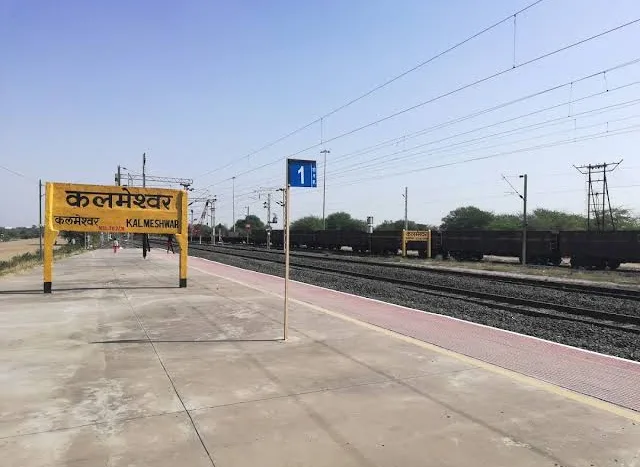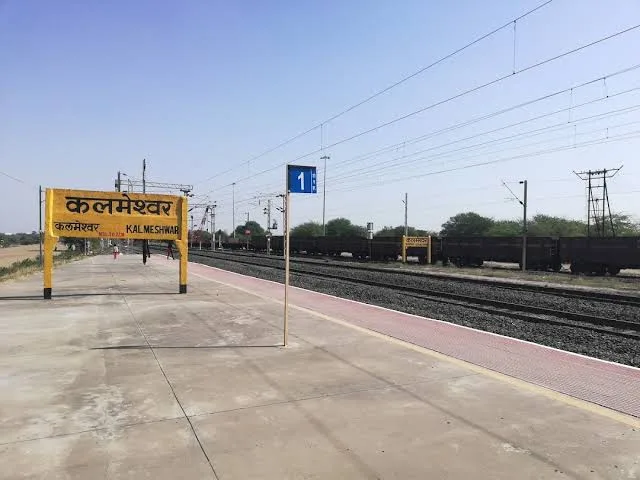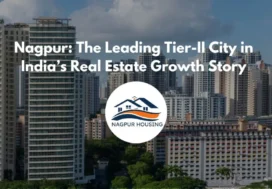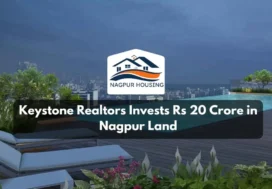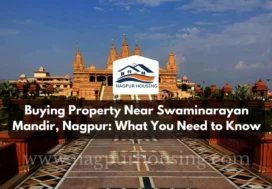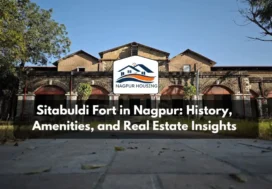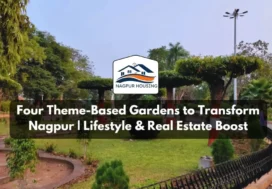Kalmeshwar Development Plan: The Next Real Estate Hotspot Near Nagpur
Imagine a quiet town just a short drive from Nagpur, full of fields, handloom activity and potential for growth. That town is Kalmeshwar, and recently the central government announced a major plan to transform it into a satellite city of Nagpur. This is a story of opportunity, change and yes, some trade-offs.
In this article, I’ll walk you through:
- The key features of the proposed transformation of Kalmeshwar
- The upsides (pros) of this development
- The caution points (cons) you should know before jumping in
Let’s start the journey.
You might like: New Nagpur Project Explained: MoUs, Funding, and the 15-Year Development Plan
Key Features of the Plan
Here are the main components of what’s being proposed, in simple everyday language.
a) Infrastructure boost
The government has announced some big infrastructure work for Kalmeshwar. For example:
- A 536-metre Railway Overbridge (ROB) under the Setubandhan Yojana is being built at Level Crossing No. 289. The cost is about ₹55 crore. This is aimed at ending frequent traffic jams caused by gate closures.
- Under a scheme called ‘One-Time Improvement’ with a budget of about ₹96 crore, about 9.5 km of internal roads will get improvements: proper dividers, white-topped surfaces, drainage, pedestrian paths, bus stops, street lights.
- The upgrade also includes landscaping, utility ducts (so wires go underground), sewage networks. The minister urged local reps to prevent encroachments.
These are foundational steps: roads, overhead bridges, drainage. Without them a city can’t function smoothly.
b) Leveraging local talents & agriculture
Rather than just building concrete, the plan also looks at Kalmeshwar’s character:
- The town has handloom potential: nearby textile clusters (e.g., at Dhapewada) are already seeing strong demand. The minister suggested that Kalmeshwar could become a global handloom hub.
- On the agriculture side, farmers were encouraged to explore dairy and orange cultivation, and to use AI for fertiliser, irrigation and disease management. That means modernising the rural economy.
So, the idea is not just to bring in industries, but to upgrade existing ones and make the area more vibrant.
c) Connectivity & satellite-city logic
Why call Kalmeshwar a “satellite city”? Because it lies not far from Nagpur, and improved infrastructure will connect it more closely. Once the roads, overbridge and services improve, it can serve as a secondary urban hub, relieving pressure on Nagpur, and offering residents a more affordable, fresh alternative.
In short: the plan = better infrastructure + upgraded local economy + stronger connectivity.
Pros – Why this could be a good bet
Now let’s get into the good side. If things go well, what’s in it for the town, for residents, and for investors?
Affordable alternative to Nagpur
Nagpur city is growing fast. As it expands, costs go up. Kalmeshwar offers an edge: you’ll likely find land, housing and services at lower cost than central Nagpur. With the infrastructure upgrades, commuting and services may soon become much better. For people working in Nagpur but wanting calm, this could be ideal.
New economic opportunities
Because of the infrastructure push and the handloom/agri focus, several new streams may open up:
- Skilled and semi-skilled jobs in textiles, weaving, processing.
- Modern agriculture/dairy with tech support (AI, sensors) could boost incomes.
- Real estate development: residential, commercial, offices.
- Possibly industrial/ancillary units thanks to logistic advantage and connectivity.
So for locals, for migrants, and for investors, there is big potential.
Improved quality of life
Fancy words aside, the real benefit will be day-to-day life. Better roads mean less time in traffic. Proper drainage and sidewalks mean safer walking and less flooding. Street lights, bus stops, all this makes living easier and more pleasant.
Strategic location
Kalmeshwar is already connected via road and rail. According to data, it lies roughly 25 km from Nagpur. Being so close helps. Plus, the region has industrial land, so expansion makes sense.
Cons – What to watch out for
Of course, no plan is perfect, and there are risks. Here are some things to keep in mind before getting carried away.
Implementation delay & uncertainty
Announcing projects is easier than executing them. The overbridge and road plans are good, but delivery may be slow, budgets may change, or priority may shift. Until the work is done, the benefits remain potential.
Infrastructure alone isn’t enough
Yes, roads and bridges matter, but you also need other things: schools, hospitals, water supply, power, waste-management. If those lag, quality of life may not follow. Transforming into a “satellite city” is more than hardware.
Land and regulatory risks
With growth comes land speculation. Prices may surge, local farmers may be pressured. Also, if regulations for zoning, environment, sprawl aren’t managed, you could end up with uncontrolled development, traffic jams, loss of green cover.
Social and environmental trade-offs
Expansion often means countryside gives way to urban footprints. Farming land may be lost, small weavers may get displaced, and ecology may suffer. For instance, if drainage networks are weak, flooding risk increases. Even Kalmeshwar has seen home‐damage due to rain recently.
Over-dependence on a few sectors
Handloom, orange cultivation, dairy are great, but they must scale and diversify. If growth happens only in one area, vulnerability remains: market fluctuations, weather risks, global textile competition.
Story-mode: A day in the life of future Kalmeshwar
Let’s paint a picture of how things could be.
You wake up in the morning in Kalmeshwar. Your house is in a new residential colony, built in one of the areas where internal roads were upgraded. The street has proper streetlights, paved sidewalks, trees planted along the road. You step outside, walk to the bus stop that’s been recently built; a service bus picks you up and you reach Nagpur in 35 minutes, much better than earlier 50 minutes with traffic snarls.
At work, maybe you are employed at a handloom-unit that supplies sarees across India and exports abroad. Your unit uses modern weaving machines and has logistic links. Farmers you know are using sensors and AI to monitor orange trees; one of them tells you his yield increased thanks to the ion-sprayer device he bought.
In the evening you unwind in a green belt adjoining the town, or perhaps visit the local market for fresh produce. Your children go to a school that was set up responding to the town’s growth. You feel the place is no longer just a “satellite” but a destination.
This is the vision. But for this vision to become reality, the pieces must fall into place.
What this means for various stakeholders
Let’s break it down: who gains, who needs to act, what to keep in mind.
For local residents
- Gain: better services, jobs, improved living standards.
- Action: Be part of the planning process, help local body ensure encroachment is avoided, green spaces are reserved, basic amenities don’t get ignored.
- Watch: Rising land prices which may push people out; infrastructure that looks built but is poorly maintained.
For farmers & weavers
- Gain: New markets, modern tech for agriculture, higher incomes.
- Action: Upskill understand new tech, explore cooperatives, diversify crops.
- Watch: Dependency on one crop or one buyer; land acquisition pressures.
For real-estate investors & builders
- Gain: Growth potential before the crowd arrives; early property could fetch good ROI.
- Action: Check regulatory approval, understand master plan, ensure amenities promised are delivered.
- Watch: Speculative bubbles; projects that look promising but get delayed; infrastructure that lags.
For the government/local body
- Gain: Economic growth, urban relief for Nagpur, improved regional profile.
- Action: Holistic planning, infrastructure, environment, social amenities must go together. Maintain transparency and accountability.
- Watch: Fragmented growth, lack of maintenance budget, ignoring the surrounding rural area.
The long-term outlook
If everything goes well, here’s how Kalmeshwar might look in 10–15 years:
- A vibrant town of perhaps 2–3 lakh people (depending on how growth happens) rather than the few tens of thousands it has now.
- A mixed economy: handloom/ textile units, dairy/orange farms with tech, small-medium industries, services.
- Strong link with Nagpur via road, rail, maybe rapid transit someday. Many people may live in Kalmeshwar and commute to Nagpur or vice-versa.
- Green belts and planned neighbourhoods, the “satellite” city idea works when the growth is managed, and the quality of life is high.
- Real-estate values may increase, local employment up, rural incomes rising.
However, if execution is weak, then growth may be haphazard: traffic jams, poor amenities, loss of rural character, speculative land deals.
Final thoughts
To sum up: The announcement that Kalmeshwar will be developed as a satellite city of Nagpur is a big opportunity. With improved infrastructure, leveraging local economy (textiles + agri), and better connectivity, the town may indeed shine.
But it is not a guaranteed success story yet. The difference between a well-planned satellite city and a chaotic suburb lies in execution, holistic planning, and monitoring.
If you are a stakeholder, a resident, investor, farmer or just someone keeping an eye on Nagpur’s growth belt, now is the time to watch Kalmeshwar closely. Ask good questions:
- Are the internal road upgrades being carried out?
- Has the overbridge been completed on time?
- Are schools, hospitals and public amenities keeping pace?
- Is land-use being regulated to avoid speculative sprawl?
- Are small producers (weavers, farmers) being genuinely included?
If these things align, this could be a story worth being part of.

